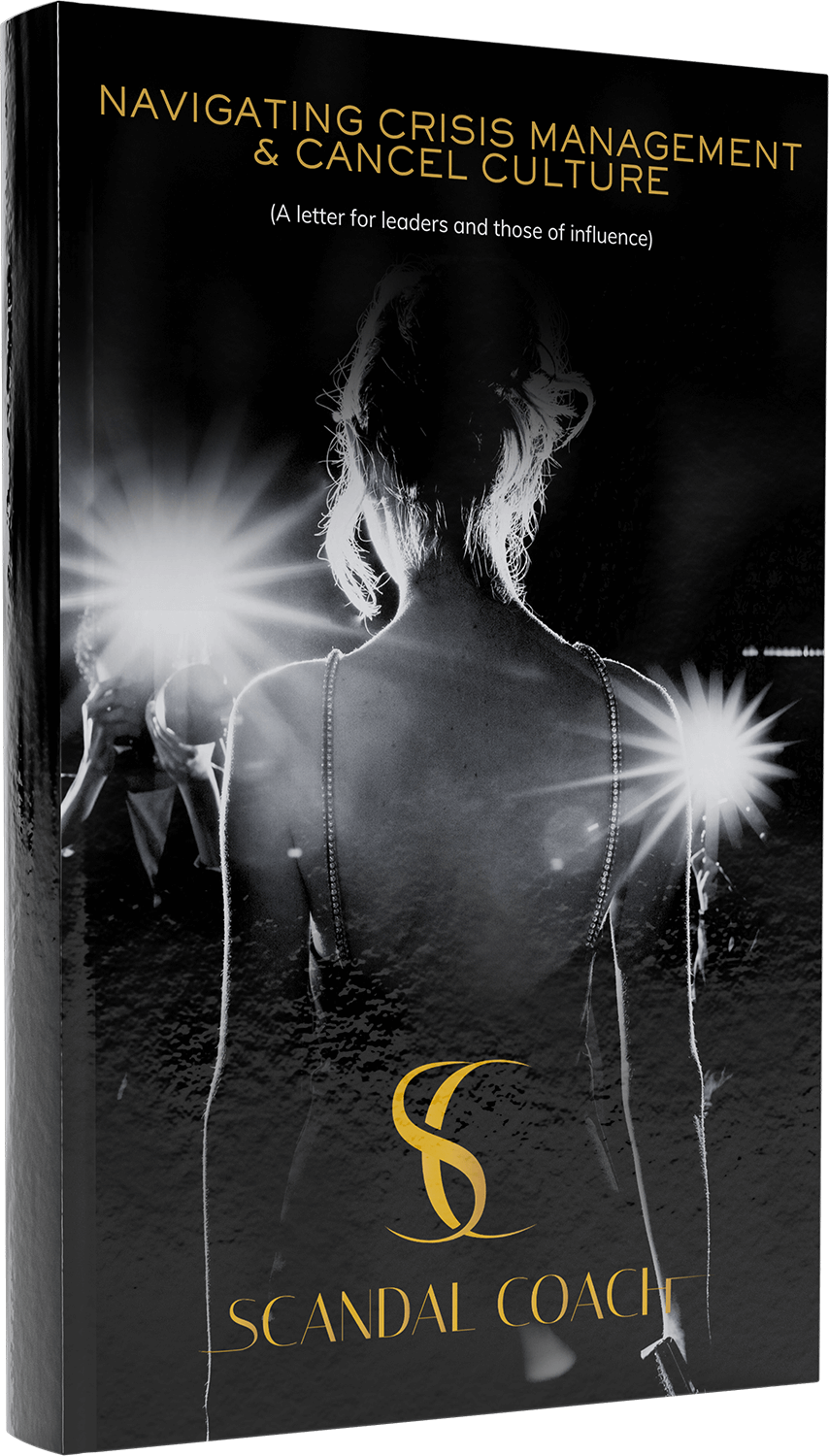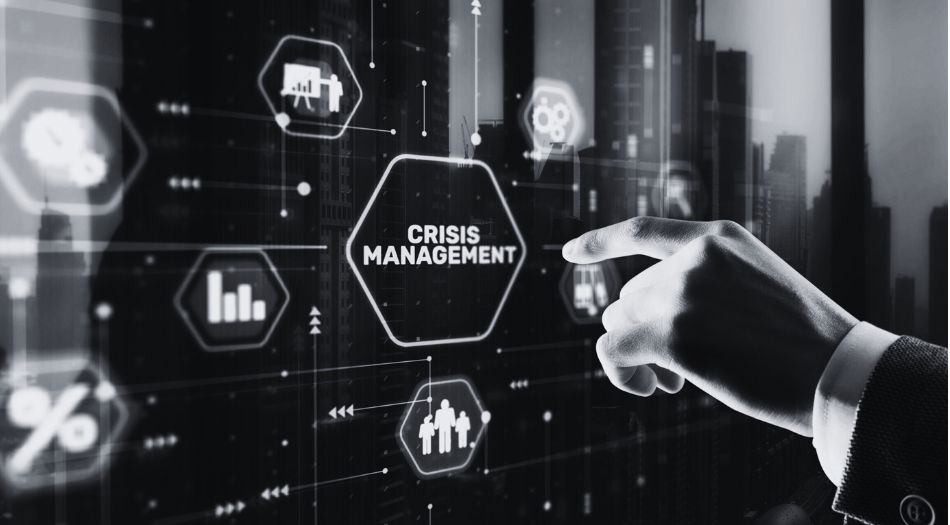Key Takeaways
- Effective scandal management requires understanding the deep impacts of crises, strategic communications, and the role of timing and context in shaping public perception.
- Long-term trust rebuilding post-scandal is a deliberate process involving genuine accountability, community engagement, and leveraging adversity to drive positive change and institutional reforms.
- Maintaining momentum in reputation recovery entails continuous improvement, empathetic audience engagement, consistent messaging and monitoring feedback, and sharing success narratives to positively steer the story beyond the scandal.
The Anatomy of a Scandal: Recognizing the Impact
“Scandals impact far more than just reputation and legal standing; they penetrate the core of one’s emotional and psychological well-being. At Scandal Coach, we understand that the true cost of a scandal is measured not only in headlines but in sleepless nights and stolen peace. Our approach goes beyond surface solutions, addressing the deep-seated effects that can linger long after the public interest wanes. We’re here to support our clients in healing fully, not just outwardly, but in all the hidden corners where true recovery takes place.” Scandal Coach
Imagine a pebble dropped into a pond. The initial splash is dramatic, but the ripples it creates are far-reaching, affecting every part of the pond. This is quite similar to the anatomy of a scandal. Scandals, be it personal or organizational, are like that pebble – their impact is profound and far-reaching. They can lead to:
- Legal repercussions
- Financial downturns
- Loss of trust
- Significant changes within the implicated organizations
In this digital age, understanding these triggers and dynamics is crucial for managing scandal situations effectively. But, how exactly does a scandal unfold, and what are its immediate and lasting effects?

The Ripple Effect of Media Exposure
Picture the scene – a scandal hits, and the media coverage is in full swing. The tone and extent of this coverage can steer public reactions, often leading to severe consequences like bad news for the company due to the spread of scandalous information:
- public outrage
- formal inquiries
- loss of trust in the company
- financial losses
- damage to reputation
Internally, it can trigger a deep reflection within companies, prompting a reassessment of identities and a collective drive for change among employees.
This intense media spotlight can shake up established corporate habits, making employees more receptive to new protocols and standards. So, the ripple effect of media exposure during a scandal can be both disruptive and transformative.
Emotional Turmoil and Public Perception
Imagine being in the eye of a public storm, with every move scrutinized and analyzed. This can be the reality for individuals involved in a scandal. The emotional turmoil caused by intense public scrutiny can manifest in stress and anxiety, impacting one’s emotional state, mental health, and overall well-being. However, it’s not all doom and gloom. By implementing strategies that mitigate stress and provide emotional support, not only can personal well-being be maintained, but it can also positively influence public perception during a crisis. In fact, social science research can offer valuable insights into managing such situations effectively.
But what happens when the scandal hits? When the clock is ticking, and the world is watching?
Timing and Context: When Scandal Hits
As they say, timing is everything, and this is especially true for scandals. The timing of a scandal can significantly influence its impact, potentially creating a sense of urgency that facilitates organizational change. The immediate reaction, the steps taken in the aftermath, the message conveyed – all these can shape the future course of the individual or organization involved.
With that understanding, let’s delve into how to navigate this storm effectively.
Navigating the Storm: Immediate Response Strategies
“In the eye of a crisis, the immediacy of your response can shape the entire narrative. At Scandal Coach, we emphasize strategic speed without sacrificing thoughtfulness. Our immediate response strategies are designed to mitigate damage, communicate effectively, and lay the groundwork for rehabilitation. It’s about being swift but also smart, ensuring that every action and word is calibrated to not just react to the crisis but to actively reshape it in favor of our clients.” Scandal Coach
Picture yourself on a ship in the middle of a storm. You need to act fast to prevent the ship from capsizing, but you also need a strategy to reach the shore safely. The same holds true when navigating a business scandal. Balancing immediate decisive action with careful strategic planning is essential to restore trust and effectively address the scandal.
But how do you know when to speak up or stay silent? And how do you craft an authentic message amidst the chaos?

To Speak or Not to Speak: The Decision to Respond
The decision to respond publicly or stay silent during a scandal is like navigating a tightrope. It requires a strategic evaluation of possible outcomes and implications. A prompt and public acknowledgment of the crisis can demonstrate accountability and show stakeholders that the organization cares. However, the response should be finely calibrated, considering the brand’s identity, the specifics of the scandal, and the extent of blame.
And, displaying empathy in this communication can contain the situation, protect the brand’s image, and foster measured reactions from the audience. But what does an authentic message look like?
Crafting an Authentic Message
Creating an authentic message in the aftermath of a scandal is like walking a tightrope. Stakeholders, having their trust compromised, place greater emphasis on objective and verifiable information. Thus, an authentic message effectively communicates responsibility for the crisis without compromising the organization’s core values and mission, while also addressing the abstract objective of rebuilding trust.
But how do you put this message into action? How do you control the damage?
Damage Control Tactics
Damage control in a scandal is like firefighting. Immediate measures are crucial to prevent further damage and begin the trust restoration process. Tactics include:
- Using social media to address misinformation swiftly
- Employing a strategic crisis management framework
- Ensuring that the response genuinely addresses stakeholders’ emotional concerns
And throughout this process, professionalism and respect when responding to criticism can help re-establish trustworthiness and reputational strength.
But what happens next? How do you rebuild trust for the long term?
Rebuilding Trust: Long-Term Recovery Efforts
Rebuilding trust after a scandal is like regrowing a forest after a fire. It takes time, effort, and a nurturing environment. Scandals can serve as a catalyst for positive organizational change, offering a chance to reform corporate culture and strategy. Genuine responsibility is crucial for the long-term recovery of trust and reputation.
Efforts to rebuild public image and trust require authenticity and consistent engagement with the community. But how does this translate into action?

From Apology to Action: Demonstrating Accountability
Apologizing after a scandal is just the first step. What truly matters is the action that follows. A sincere, prompt apology is a crucial step in demonstrating accountability post-scandal, and showing genuine empathy can shift public opinion positively. Transparent actions, such as withdrawing a flawed product or explaining the resolution process, signal a commitment to change.
Organizations can show a commitment to ethical practices by learning from scandals, discarding unethical normalized behaviors, and implementing institutional changes. But how does one engage positively with the community during this process?
Engaging Positively with Community
Engaging with the community after a scandal is like reconnecting with a friend after a misunderstanding. Open dialogue, understanding, and positive engagement are key. Initiating a listening tour and inviting dialogue are crucial first steps for rebuilding trust. Enhancing stakeholder relationships requires regular trust-building communication, addressing their needs, and demonstrating reliability. Brands can connect authentically with a wider community by diversifying influencer partnerships and promoting positive content on online platforms.
The process of restoring a brand’s reputation is underpinned by the consistency of positive engagement and persistent contribution to the community. But how can one leverage growth from adversity?
Leveraging Growth from Adversity
Every cloud has a silver lining, and that’s also true for scandals. Organizations can undergo profound learning processes and cultural shifts that might have been unattainable without such crises. Stakeholders may shift their focus to more difficult-to-alter indicators of a firm’s performance as a protective measure against further dishonesty. Public backlash can thus be turned into a catalyst for personal and professional growth.
But how can one cultivate resilience and strengthen bonds post-backlash?
Cultivating Resilience: Strengthening Bonds Post-Backlash
“Resilience in the face of scandal isn’t just about weathering the storm; it’s about learning to dance in the rain. At Scandal Coach, we focus on cultivating a deep-seated resilience that empowers our clients to turn adversity into advantage. Through tailored strategies, we strengthen not only their ability to endure but also to emerge more insightful and equipped than ever before. It’s about transforming scandal into a catalyst for profound personal and professional growth.” Scandal Coach
Imagine a phoenix rising from the ashes, stronger and more vibrant than before. Overcoming controversy through accountability and learning can solidify bonds with an audience by showing true integrity and a commitment to improvement. Fostering transparent communication and collaborative engagement can help rebuild and reinforce audience trust.
Successfully navigating a controversy can bolster the connection with an audience by demonstrating empathy, fostering trust, loyalty, and increased engagement. But how does one apply the insights gained from past mistakes?

Lessons Learned: Applying Insights to Avoid Future Pitfalls
Learning from past mistakes is the first step towards preventing them in the future. Services like Scandal Coach can help organizations learn from past scandals and apply those lessons to prevent similar incidents in the future. Leaders can use these insights to drive cultural change within their organizations. It’s also crucial to address mechanisms like euphemisms that may normalize unethical behavior post-scandal.
But how does one commit to continuous growth?
Continuous Improvement: A Commitment to Growth
Imagine a seed growing into a tree, constantly reaching for the sun and spreading its roots deeper into the ground. This is a metaphor for continuous self-improvement within an organization. Viewing negative feedback as an opportunity for growth and enhancement shows a commitment to progress. Avoiding decreased performance and poor morale involves addressing concerns like:
- employee reluctance to voice concerns due to fear of conflict or controversy
- lack of communication and transparency within the organization
- failure to provide adequate training and development opportunities
- ineffective performance management systems
By addressing these concerns and fostering a culture of continuous improvement, organizations can thrive and achieve their goals.
A culture of transparency and continuous self-improvement can help mend and strengthen relationships with stakeholders. But how does one relate to the audience through empathy?
The Power of Empathy: Relating to Your Audience
Empathy is like a bridge that connects two hearts. Understanding and relating to the feelings, needs, and experiences of others can create a genuine connection with an audience. Responding to customer interactions on social media with empathy can build stronger community relations.
But how does one maintain the momentum once the reputation recovery process has begun?
Maintaining Momentum: Sustaining Reputation Recovery
“Maintaining momentum through a crisis is crucial; it’s about setting the pace for long-term recovery and resilience. At Scandal Coach, we guide our clients not just to respond effectively but to sustain this effort into the longevity stage of crisis management. This means transforming initial responses into enduring strategies that safeguard their future, ensuring they don’t just survive the scandal but thrive beyond it.” Scandal Coach
Keeping the momentum going in reputation recovery is like keeping a flywheel spinning. Continuous effort is imperative to preserve future opportunities, maintain public trust, and ensure the longevity of a career for public figures. Reputation management requires ongoing efforts to build trust, foster credibility, and enhance an entity’s image. Strategies like managing online reviews, content promotion, and search engine optimization are critical to maintain a favorable public image.
Proactive reputation management enables organizations to swiftly address both positive and negative feedback, uphold strong online engagement, and ensure alignment with core values and objectives. But how does one ensure consistency in messaging and actions?

Consistency in Messaging and Actions
Consistency in messaging and actions is like a steady heartbeat, providing rhythm and reliability. A consistent and professional brand image across digital platforms is fundamental in positively engaging with the community. Ensuring alignment in online and offline interactions is key for effective reputation management. Consistent and authentic messaging supports the establishment of a dependable and trustworthy online presence. Engaging in continuous self-improvement, evidenced by actively listening to feedback and being transparent about the growth process, can profoundly reinforce stakeholder relationships.
But how does one monitor and adapt to feedback?
Monitoring and Adapting to Feedback
Monitoring and adapting to feedback is like adjusting the sails of a boat according to the wind. Anticipating future actions, creating feedback mechanisms, and enhancing dialogue with stakeholders aid in the reputation recovery process.
Here are some strategies to consider:
- Monitor conversations within the industry
- Analyze continuous customer feedback
- Open communication channels
- Responsive engagement with online audiences
By implementing these strategies, you can demonstrate a commitment to address concerns and improve your reputation.
Regular monitoring and adaptation based on feedback are integral components of online reputation management, ensuring that brands maintain positive connections with their audience over time. But how does one share success stories to reinforce a favorable public image?
Positive Storytelling: Sharing Successes
Sharing success stories is like lighting a beacon in the dark, guiding others towards the positive aspects of the organization. Organizations employ platforms such as social media, blogs, and press releases to share positive news and developments that reflect their growth and the successful overcoming of past challenges. These stories focus on:
- Organizational milestones
- Community engagement
- Internal improvements
- Future development plans
They showcase the ongoing commitment to positive change, much like the efforts made during the Bill Clinton administration, reflecting the importance of candidate evaluation.
But how does one move beyond the scandal and rewrite their narrative?
Rewriting the narrative
“Rewriting your narrative after a scandal isn’t just about damage control; it’s about seizing the pen and authoring the next chapter of your life with intent and integrity. At Scandal Coach, we empower our clients to take control of their stories, turning setbacks into comebacks. It’s about reframing not just your story, but how you live your life moving forward, ensuring you emerge not just recovered, but renewed.” Scandal Coach
Rewriting your narrative after surviving scandal is like charting a new course in uncharted waters. It’s about taking control of your story, finding the strength in vulnerability, and embracing the journey to self-discovery. As the saying goes, “Your story doesn’t end with a scandal; with Scandal Coach, it’s where you begin to write your most compelling chapters”.
But what does this journey to self-discovery look like?

The Journey to Self-Discovery: Beyond the Scandal
The journey to self-discovery after a scandal is like embarking on a voyage of personal transformation. It’s about finding that hidden seed of growth within the scandal and nurturing it to flourish. Success stories of individuals who have successfully rewritten their narratives, such as Hugh Grant, who reshaped his narrative from a tabloid target to a respected actor and privacy advocate, illustrate the transformative power of owning one’s story.
But how does one embrace vulnerability on this path to authenticity?
Embracing Vulnerability: The Path to Authenticity
Embracing vulnerability in the face of a scandal is like opening your heart to the world. It’s about seeing vulnerability as a strength, not a weakness, and realizing that it can lead to a more authentic and powerful personal story. Public figures like Prince Harry and Meghan Markle have showcased vulnerability as a means to authenticity and narrative control.
But how does one harness the power of community in a public forum to reclaim their story?
The Role of Community in Reclaiming Your Story
The role of community in reclaiming your story is like the support of a friend during hard times. It’s about realizing that you’re not rewriting your story in isolation, and that there’s a community with you, every word of the way.
But how does one craft a future that reflects their true self and aspirations, beyond the scandal?
Crafting Your Future: Life Beyond the Scandal
Crafting your future after a scandal is like painting a blank canvas. It’s about envisioning and creating a future that reflects your true self and aspirations. It involves setting goals, personal development, and continuous learning.
Let’s not just turn the page; let’s write a whole new book that reflects your true essence as a freelance writer. Start with us here at Scandal Coach by downloading our guide here, which takes you through our process: DOWNLOAD THE GUIDE




